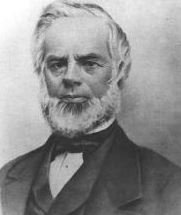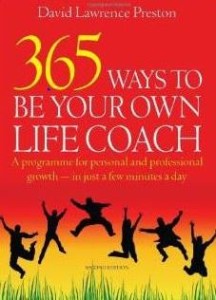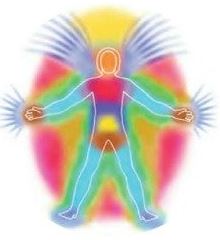In the early 1980s, the newly appointed Anglican Bishop of Durham, Dr David Jenkins, said he did not believe the gospel birth stories nor that that a physical resurrection had taken place, and that such beliefs were not necessary to be a good Christian.
You may remember the uproar in some Christian circles. Many – including the Prime Minister at the time, Margaret Thatcher – thought he had no right to call himself a Christian and senior members of the Church of England demanded he be tried for heresy (the last heresy trials had been over a hundred years previously).
Moreover, on the day of Dr Jenkins’ ordination at York Minster, lightning struck the Minster and part of the roof caught fire. Proof, said his critics, that God was angry with the church for appointing him.
All this made quite an impression on me, having rejected the strict Methodist upbringing to which I had been subjected. I began to take an interest in religion from a historical point of view. I quickly discovered that Bishop Jenkins was merely expressing a view that had long existed among scholars. For example, Dr Albert Schweitzer wrote in 1906: ‘The histories of Jesus’ birth are not literary versions of a tradition, but literary inventions.’[1]
But what was the Bishop really saying? Let’s take a look at the Christmas and resurrection stories:
The Christmas story which is enacted around the world every December is based on just two gospels – ‘Matthew’s’ and ‘Luke’s’. ‘Mark’ and ‘John’ have nothing to say on the issue. Indeed, the Fourth Gospel reports an incident in which a crowd doubted that Jesus was the Messiah precisely because he did not come from Bethlehem, but from Galilee[2]

The familiar Christmas tale combines ‘Matthew’ and ‘Luke’.
Joseph and Mary travelled from Nazareth to Bethlehem on a donkey. Their son was born in a stable because there was no room at the inn. They were visited by shepherds and three wise men from the East. According to ‘Matthew’, and ‘Matthew’ alone, the family then had to escape to Egypt to avoid persecution from King Herod. Eventually they returned to Nazareth and nothing more was heard of them for over a decade.
Now apart from the sheer implausibility of such a tale, it is compounded by a number of ‘inconvenient’ facts based on what we know about history and the culture of Palestinian society at that time.
To start with, the above narrative is a combination of two incompatible and very different sources. The only thing they have in common is the location, Bethlehem, and their wish to portray Jesus’ birth as important. ‘Matthew’ was also concerned to link it in as many ways as possible to the ancient Hebrew prophecies.
There is no mention of this miraculous birth anywhere else in the New Testament: no mention in the earliest gospel, ‘Mark’, and no mention in Paul’s letters, which pre-date ‘Mark’. Paul had met with the disciples Peter and James (Jesus’s biological brother) – surely they would have discussed such a remarkable turn of events? Or is it simply that these stories hadn’t yet been circulated when the earliest New Testament texts were written?
There’s no mention of the birth in ‘John’s’ Gospel; no mention in the Acts of the Apostles; and no mention in the later letters. Nowhere in the gospels does Jesus make any reference to his birth, and neither do his mother or his brothers! Curious!
Bethlehem
It was especially important for the author of ‘Matthew’s Gospel’ that Jesus was seen to come from Bethlehem, since the prophet Micah had foreseen a Messiah being born there [3]. ‘Matthew’ stated it as a fact [4] but made no attempt to explain how they came to be in Bethlehem; that story came only from ‘Luke’. He wrote that a census was to take place which required every citizen to return to their ancestral home. Because Joseph was said to be a descendent of King David, this meant David’s city, Bethlehem.
Good story. The problem is, it simply isn’t true. Historians have searched in vain for an empire-wide census at the time of Jesus’s birth, but there was none. In any case the Romans had no jurisdiction to hold a census in Galilee since this was Herod’s province. And not even the Romans would have insisted that a heavily pregnant woman travel the eighty miles from Nazareth to Bethlehem through hostile territory on a donkey.
The flight into Egypt
According to ‘Luke’[6], after the birth the family immediately returned to Nazareth. But ‘Matthew’s’ gospel says that Mary, Joseph and the baby fled to Egypt to avoid an order from King Herod that all new born Jewish boys be killed. But there’s no record of any such decree, and no record of a slaughter of Jewish babies at that time. It is simply a literary way of linking Jesus’s birth to the passage in the scriptures in which Yahweh says, ‘Out of Egypt I called my son.’[7]
So were ‘Matthew’ and ‘Luke’ fibbers? Yes and no. They saw no harm in using a little artistic licence or borrowing a few ideas from other cultures. They simply wanted to encourage people to join their new community.

Let’s turn to Jesus’ crucifixion, burial and resurrection.
While Jesus’s crucifixion is not in doubt (it is about the only fact about his life that is mentioned outside the official gospels), the circumstances of his burial are contested. It was unheard of for a crucified person to receive a decent burial. It was normal practice to leave them on the cross until the vultures had torn off the flesh, then take the bones to the sulphur pits outside Jerusalem which were used as a crematorium. The balance of probability is that this is where Jesus’s body ended up too.
The gospels say that that Pilate, the Roman governor, gave permission for Jesus’ body to be removed and placed in a tomb. Quite why this notoriously cruel and ruthless man would have given permission for the body of this particular insurgent to be given this special treatment is unclear, except it set the scene for what followed next.
Nobody saw Jesus walk out of the tomb!
Why make up a story? When Jesus died, his followers’ hopes that he was the one to liberate his people were shattered. Then, as the decades rolled by, successive generations of Christians began to see him as the personification of G_d. But how could G_d die? How could they execute G_d as a common criminal?
The New Testament writers and subsequent theologians had a lot of explaining to do! Resurrection was the startling explanation they came up with.
According to the gospels, Jesus repeatedly told his disciples that he would be killed and then resurrected on the third day[3]. Did he actually speak those words? We don’t know. According to these same sources, nobody – not even his closest disciples – expected him to rise again, and when the post-Easter Christ figure ‘appeared’ to them, all the witnesses were so surprised they didn’t recognise him.
Most of the gospel sightings began and ended mysteriously. Usually he ‘drew near’ then ‘disappeared from sight’. But the gospel writers went to great lengths to insist that the risen Jesus was not a ghost, nor a badly injured man hobbling around. Even though he could appear and disappear at will and walk through walls, they claimed he ate, drank and could be touched.
Paul of Tarsus would not have believed this. He believed that Jesus returned in changed form, not as a resuscitated corpse but transformed into a spiritual body
I don’t have space to go into all the inconsistencies in the resurrection stories, so I’ll summarise:
- In ‘Mark’s’ Gospel the disciples fled in terror and returned to Galilee.[4] The original gospel ended there, but decades later twelve extra verses were added by a second author in which the Christ figure ‘appeared’ to them several times, spoke to them and was immediately whisked away to heaven. Nowhere does either author claim that Jesus had risen in bodily form.
- In ‘Matthew’s’ Gospel, Mary Magdalene encountered Jesus as they fled from the empty tomb, but she didn’t recognize him. Clearly he wasn’t the man they remembered from just a few days earlier.
- ‘Luke’s’ Gospel added several more appearances in which Jesus ‘came near’ and ‘stood among them’, showed them his wounds, ate fish, then vanished. There are no such claims in ‘Mark’ or ‘Matthew’. Moreover, far from fleeing to Galilee, the disciples stayed in Jerusalem and ‘were continually in the temple.’
- In the Fourth Gospel – written around 70 years after the crucifixion – neither Mary Magdalene nor Peter recognised him at first. Later, he ‘stood among’ the disciples and invited ‘doubting’ Thomas to touch his wounds.[5] He also appeared to the disciples on various occasions, once while they ate bread and fish for breakfast and another in which he appeared on a beach and gave the disciples some advice on fishing.[6]
- Acts of the Apostles, written by the same author as ‘Luke’s’ Gospel, merely says he ‘presented himself alive’ to the disciples over a forty day period before the momentous events of Pentecost.
Once again we find ourselves wondering which, if any, of these accounts is correct, since they can’t all be right! The only things the gospels agree on is that the tomb was empty on the third day and Mary Magdalene was one of those who discovered it. Bear in mind that with many of the gospel stories, the longer the period between Jesus’s life (c 5 BCE-30 CE) and the writing of the gospel (c 70 CE – 105 CE), the more embellished they become.
Psychologists tell us that we are just as likely to see what we believe as believe what we see. In my opinion there’s no verifiable evidence for a physical resurrection, just the words of a small group of devotees. But we must all decide for ourselves. Whatever you choose to believe is true – for you. That’s the nature of belief.
Bishop Jenkins described the resurrection stories as ‘a conjuring trick with bones’ – hardly likely to endear him to the diehards. But what I believe he was trying to say was important – seek the deeper, metaphysical truths in the scriptures rather than blindly accepting them as literal truth (which they are quite plainly not).
But what are these truths? The 19th Century mystic, Charles Fillmore, said that ‘there is only one metaphysical interpretation and that is your own.’ In other words, what matters is what the biblical texts mean to you. For me, Christmas is about celebrating the birth of divine consciousness or the Christ spirit within, and the resurrection about re-affirming the indestructible nature of consciousness.
Spirituality for me is knowing that the life force, universal energy, Christ spirit, zero point field, whatever you want to call it, is present everywhere, including in me, and expressing it with joy. I believe that Bishop Jenkins – the man branded a heretic by members of his own church – thought the same.
I conclude my book ‘201 Things About Christianity You Probably Don’t Know (But Ought To)’ with the following comment:
If I have to believe in a virgin birth, walking on water, dead and decomposing bodies coming back to life and a man being carried up to heaven on a cloud before I can realise my spirituality, then there’s no hope for me. For me, in this sense conventional Christianity is a barrier. I can study it, learn from it and borrow the sayings and parables that make sense to me. The rest I can reject without fear of eternal damnation (a loving G_d wouldn’t do that to me anyway).
That’s what Bishop Jenkins was driving at. That’s not heresy – that is truth!
©David Lawrence Preston, 19.3.2018

Follow me on Facebook and Twitter @David_L_Preston
[1] The Quest of the Historical Jesus
[2] John 7:40-42
[3] E.g. Mark 9:31 and 10:34; Matthew 16:21 and 17:23; Luke 9:22 and 24:7; John 20:19
[4] Mark 16: 5-8
[5] John 20:19-20
[6] John 21:4-6












